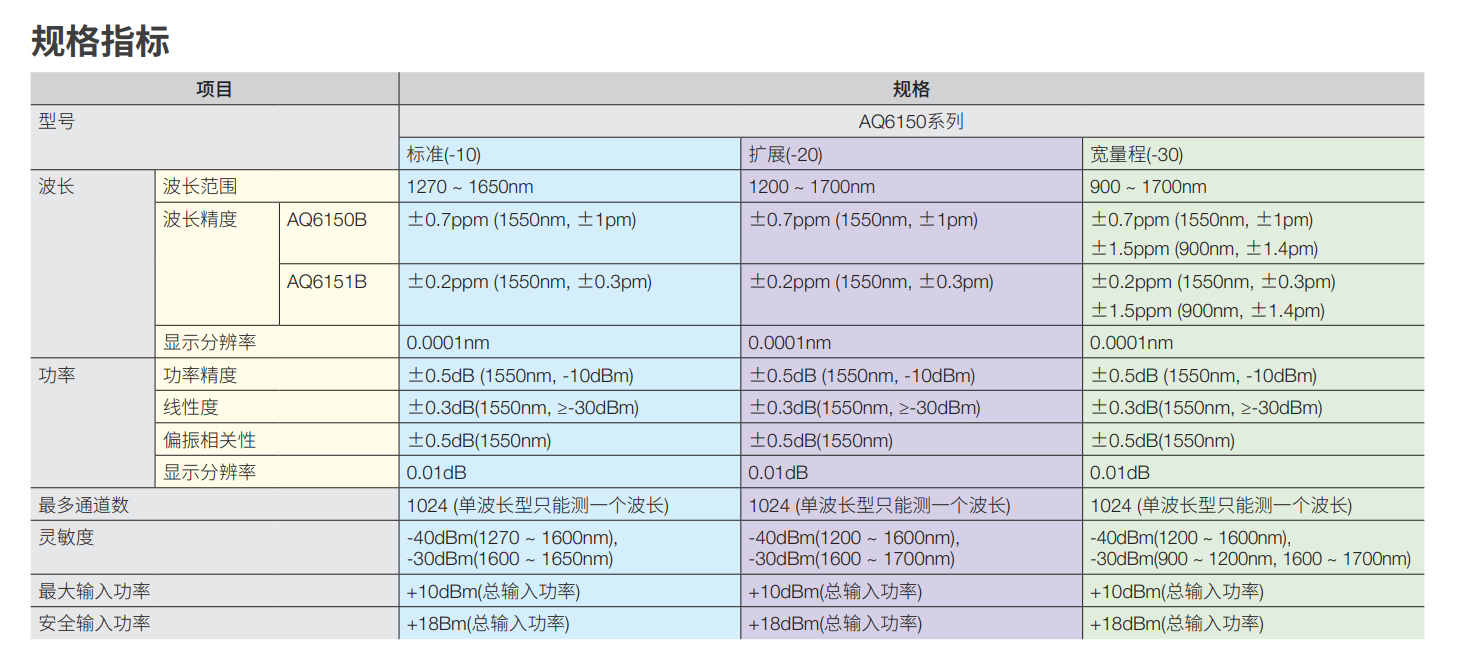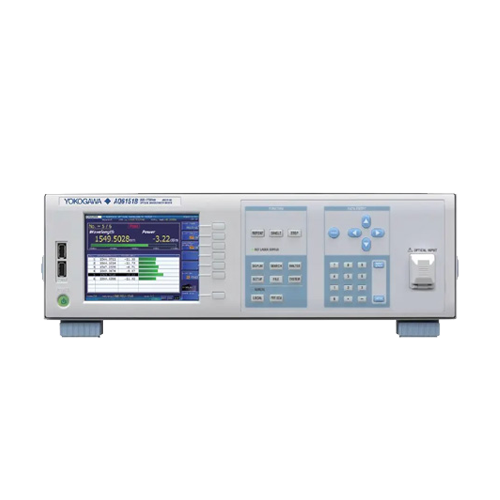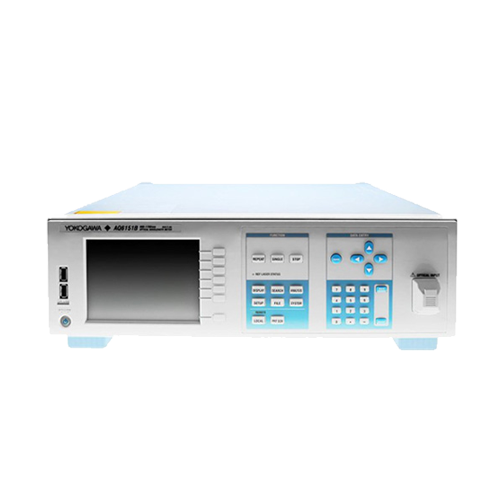
Wavelength accuracy up to ±0.2ppm
There are two models in the AQ6150 series. The AQ6151B is a high-precision optical wavelength meter with a wavelength accuracy of ±0.2ppm, which meets high-level accuracy measurement requirements. The AQ6150B is a standard optical wavelength meter with wavelength accuracy up to ±0.7ppm, suitable for less demanding measurement applications at a more affordable price.
With real-time calibration, the AQ6150 series ensures long-term stability of measurements with a highly stable reference signal from the built-in wavelength reference light source.
Supports CW, Modulated Transceiver and Optical Filter Measurements
The optical output of optical transceivers and optical transmission systems is modulated by transmission frequencies of 10G and 25Gbps. The built-in spectral analysis function employs the FFT technique to measure the spreading signal after being modulated.
In addition to the conventional CW optical mode, the AQ6150 series has a modulated optical mode. The modulated light mode analyses the spectrum to obtain the centre wavelength of the modulated light, and can be used to measure the centre wavelength of optical filters such as bandpass filters, AWGs and WSSs.
Simultaneous measurement of up to 1024 wavelengths
The AQ6150 series can measure up to 1024 different wavelengths of a single input signal simultaneously, quickly and accurately, with a minimum separation of only 5 GHz, which means that the AQ6150 series of optical wavelength meters can meet the testing needs of WDM transmission system development and production, now and in the future.
By combining multiple laser modules or optical transceivers with an optocoupler and measuring all signals at once, the multi-wavelength measurement capability also helps to increase efficiency and reduce costs in the production of single-wavelength laser devices.
Low power input while maintaining high performance
With the automatic gain control (AGC) function, the AQ6150 series can automatically adjust the gain of the electronic amplifier based on the input signal power. This contributes to greatly improved wavelength accuracy and measurement speed, even at input signal powers as low as -40 dBm.













